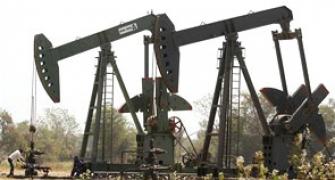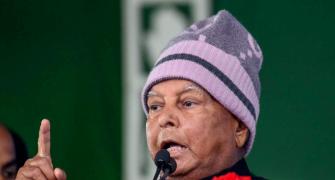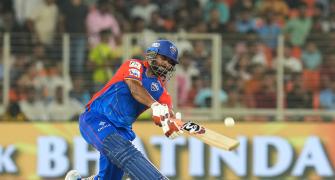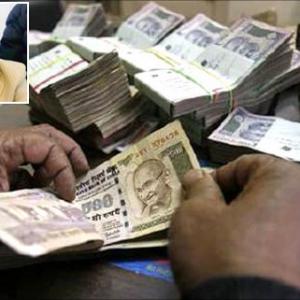 Global markets have seen a sharp movement on the back of key economic data and statements various central banks.
Global markets have seen a sharp movement on the back of key economic data and statements various central banks.
In the Indian context, market participants have also been keeping a tab on the rupee-dollar equation and fine-tuning their strategies accordingly.
Dhananjay Sinha, co-head, institutional research, Emkay Global Financial Services tells Business Standard in an interview that even as global commodity prices have softened in response to expectations of weaker global demand, the stronger performance of equities is seemingly pre-empting stronger growth.
Edited excerpts:
What is your outlook for the global and Indian equity markets?
Global liquidity seems to have supported the rally over the past few weeks and has been justified on the back of relatively stronger performance of the US economy, stabilising financial conditions in Europe and quantitative easing by the Bank of Japan.
I suppose the combination of these factors boosted global market rally and expanded valuation more than what can be justified by the modest recovery.
In case of the Indian markets as well, we have seen the spill over effect.
According to our analysis, the current valuations can be justified by very strong rebound in domestic growth -- say a gross domestic product growth of 6.5-7 per cent, which is contrasting higher than our expectation of 5.7 per cent for FY13.
We believe that market conditions are likely to remain volatile and it will be difficult to catch each rally and decline.
Hence, it will be pertinent to remain focused on fundamentally strong themes and bottom up ideas.
What about the dollar Index? How are you reading the gyration there?
Well, what has been puzzling to me is that the current market rally has been accompanied by sustained strength in the dollar index, which is out of sync with the long-term correlation.
And even as global commodity prices have softened in response to expectations of weaker global demand, the stronger performance of equities is seemingly pre-empting stronger growth.
Clearly there is something amiss here.
Can the rating downgrade to ‘junk’ by the Standard & Poors become a reality as reforms take a backseat in the election year?
I believe the rating agency is cognizant about the fact that it will be a gradual process for India’s structural imbalances to correct on their own and hence, it will be important to see how the reform process get implemented and whether it generate enough supply side impulses going forward.
Hence, the recent statement by S&P seems to capture a guarded stance.
How much of a threat is the rupee at the current levels? Do you think other emerging markets, BRIC markets will be better off in terms of flows and overall performance as compared to India in the next 6-12 months?
I think the resilience of INR/USD over the past few weeks have been surprising especially in the wake of strengthening USD.
This was fuelled by stronger portfolio flows into both Indian equities and debt market.
A correction in commodity prices, especially crude oil and gold, gave and impression that India’s current account deficit problems were taken care off.
But we have seen trade deficit for April 2013 rebounding to over $18 billion from a seasonal contraction to $10.3 billion in March.
In addition, we have seen significant surge in demand for physical gold in response to small decline in domestic gold prices, indicating that negative price elasticity is very strong. Hence, we see INR remaining volatile in the coming weeks.
Over enthusiasm in the wake of correction in commodity prices is unwinding now and INR will get realigned to strengthening dollar.
While we have maintained INR/USD target of 55 for FY14, we can see it weakening to 56-57 level as well.
So, what’s the short-term call, say for the next six months, for the markets? Can you recommend a few stocks that one can buy/sell from this perspective? What are the key factors that can alter the course?
I think the sharp correction seen recently is symptomatic of further weakening in the coming months.
Of course a lot will depend on what global central banks would do with regards liquidity injection and hence, taking stock of their moves will become very important.
We are underweight PSU banks (sell SBI), we believe private sector banks will do better (buy ICICI bank on declines), we like price markers in FMCG Space (Asian Paints, Colgate-Palmolive India, GSK Consumer); in autos we like auto ancillaries (Amara Raja Batteries); Dr Reddy’s, Wokhardt and Sun Pharma in the healthcare space; and Grasim, Shree Cement and Madras Cement in the materials pack.
Given the government’s divestment programme and the share sale given the public shareholder norm, do you expect significant money moving out of the secondary market as a result?
In general disinvestments and public shareholding norms will imply higher supply of papers and hence will weigh the broader market.
However, if the recent example of Unilever announcing its intention to by HUL stocks (in addition to few other examples) is to go by we can expect similar actions in MNC stocks and hence, we can expect strong interest in stocks where such corporate action can potentially take place.
Do you think there is scope for more cuts in CY13 or will the Reserve Bank of India (RBI) be more cautious?
I think RBI’s rate easing actions will be a gradual one and we expect not more than 25 – 50 bps (basis point) rate cut for rest of the year.
We do not see the central bank getting into an aggressive counter cyclical demand stimulating easing as it will likely reverse the recent softening in WPI inflation.
CPI inflation still remains very high despite the modest decline.
In addition, the transmission of rate-easing remains painfully slow, thereby making rate easing ineffective.
Volatility in the INR is another important variable restricting the rate easing cycle. For a more decisive rate easing to happen, we need to see growth pivoted on investments and higher domestic savings.
What is your outlook for gold and crude oil? Does the fall present an opportunity for an investor to buy gold from a two-three year perspective?
I see gold finding base around $1,350 an ounce and we see strong consumption demand at lower prices level as the estimated negative price elasticity for gold in India is 0.6, which should partially neutralise decline in investment demand for gold.
We expect crude oil prices to remain around $100 a barrel.
Image: Dhananjay Sinha | Photograph, courtesy, Business Standard










